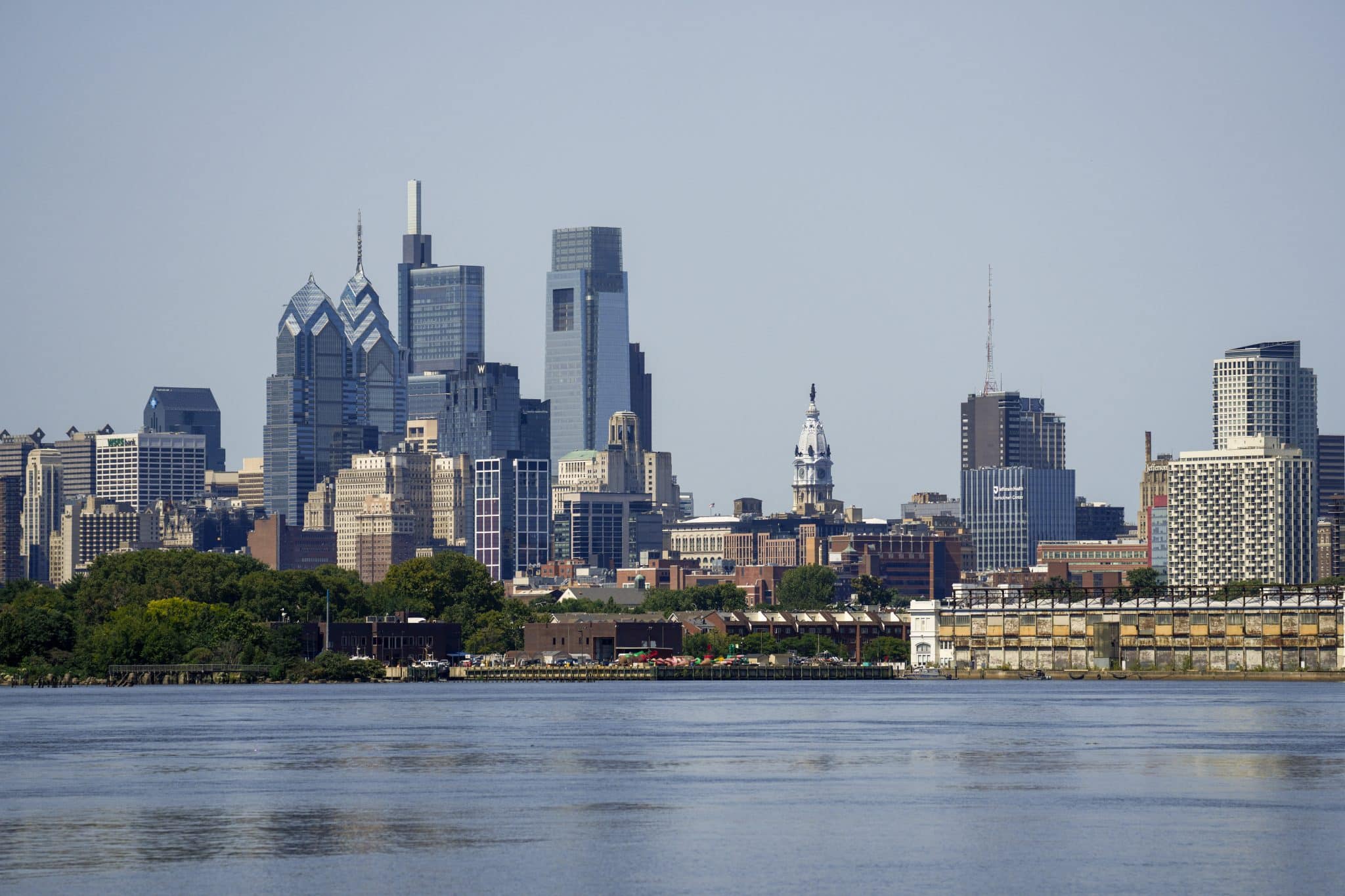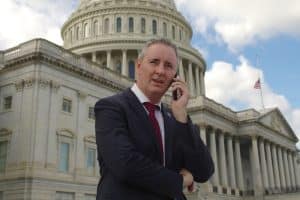This article originally appeared on Inside Climate News, a nonprofit, non-partisan news organization that covers climate, energy and the environment. Sign up for their newsletter here.
PHILADELPHIA—Some 280 years after a river-swimming Benjamin Franklin petitioned to curb water pollution here, the city is still struggling to meet the challenge, according to water advocates who assembled along the banks of one of its two main rivers on Monday.
While Franklin’s concerns were primarily about cowhides and horns dumped by industrial tanneries, today it’s human waste spilling from archaic sewer systems that impairs the city’s waterways and harms residents, according to the nonprofit environmental group PennEnvironment.
For years, the group and other advocates have pressed the Philadelphia Water Department (PWD)—purveyor of both drinking water and sewer services to 1.5 million Philadelphians—as well as the Camden County Municipal Utilities Authority, across the Delaware River in New Jersey, over the pollution. Both systems are heavily reliant on so-called “combined sewers,” a network of pipes dating to the 19th century that combine sewage and stormwater and that intentionally overflow into waterways during rainstorms.
Monday marked the latest touchpoint, as PennEnvironment released updated data on the billions of gallons of sewage-tainted overflow released each year, along with a new interactive map detailing the locations of the pollution.
“Unfortunately, our new report … shows that on far too many days each year, the Philadelphia Water Department’s pipes and sewer systems dump huge volumes of raw sewage into our beautiful waters, harming our environment and depriving the public of a safe place to fish, boat and float,” said Hanna Felber, clean water associate with PennEnvironment.
A key takeaway of the new report is that even as Philadelphia and Camden spend billions of dollars to address the pollution, the problem continues to fester, especially compared to peer cities.
READ: Scientists Find Evidence That a Pennsylvania Town’s Water Was Contaminated by Fracking
The most recent data, taken as a yearly average stretching from 2016 to 2024, shows at least 12.7 billion gallons of combined sewage a year is released from the Philadelphia system alone, according to PennEnvironment’s analysis of data provided by the PWD. The smaller Camden system does not measure its overflows in gallons, but PennEnvironment says sewage overflows occur on an average of 76 days a year, a higher figure than the 65 days the group calculated for most of Philadelphia’s watersheds.
All together, PennEnvironment calculates the overflows may make Philadelphia’s waterways unsafe for public recreation for 195 days a year, more than half the calendar. Felber said that compared unfavorably to cities such as Milwaukee and Boston, which each have fewer than 10 overflows each year.
Philadelphia Councilmember Jamie Gauthier, chair of the City Council’s Environment committee, framed the pollution as part of wider environmental justice issues and public health threats in the city.
“Part of the reason I got involved with this work in the first place is because I saw working-class Black and brown communities like those I grew up in and represent being used as dumping grounds for all kinds of dirty uses,” Gauthier said at PennEnvironment’s news conference Monday. “It angers but does not surprise me that my constituents [near Cobbs Creek] experience the highest volume of sewage overflows, and at this rate, PennEnvironment reports, it will take decades for rivers and creeks to be regularly clean.”
However, she and other advocates at the gathering acknowledged ongoing efforts by both Philadelphia and Camden County to address combined sewer overflows.
“We still have 13 billion gallons of raw sewage that goes into the river every year, despite the investments that were made.” – Tim Dillingham, Senior Advisor of the American Littoral Society
Philadelphia is a little more than halfway through a 25-year plan it agreed to with the U.S. Environmental Protection Agency to address the pollution. Called “Green City, Clean Waters,” the plan commits to spending the majority of its funding on so-called “green infrastructure,” relying on thousands of diffuse rain gardens and green roofs to soak up excess stormwater.
That approach was sold as a more cost-effective and beautiful alternative to drilling massive underground tunnels to collect excess combined sewage, a traditional approach used by cities such as Chicago, Milwaukee and Washington, D.C.
The PWD did not respond to requests for comment from Inside Climate News, but the agency generally has defended itself against prior criticism by clean water advocacy groups and taken issue with aspects of their analyses. In a robust document published on its website in 2024, the PWD said it had reduced combined sewer overflows in the city by more than three billion gallons from an initial “baseline,” asserting it was on track to meet regulatory requirements and remained responsive to the issue.
“The Philadelphia Water Department staff have spent the past 13 years implementing an innovative approach to water resources management and investments in our communities,” the PWD said. “We have faced challenges and obstacles head on, while continuing to make adjustments when needed, and will continue to do so in the coming years.”
The Camden County MUA also did not offer comment by deadline. But public records show the entity, along with the cities of Camden and Gloucester, entered into an agreement with New Jersey regulators in 2015 to begin reducing sewage overflows. Past and current leadership have told media outlets they believe they have been largely successful at that work, using some green infrastructure but primarily leaning on traditional methods, including a $20 million storage and treatment project in 2021 that the utility says reduced annual overflows by about 300 million gallons.
While acknowledging ongoing efforts made by local utilities to rein in sewage pollution, Philadelphia-area clean water advocates on Monday questioned their efficacy, particularly the work by PWD, by far the larger entity of the two. While the Green City, Clean Waters program was widely hailed as a revolutionary approach to combined sewers for most of its first decade of existence, in recent years concerns over implementation challenges and cost overruns have surfaced for the multibillion-dollar initiative. Advocates also worry those problems could become exacerbated as the changing climate makes rainfall more extreme in the region.
READ: Pennsylvania Was Once a National Leader in Renewable Energy. What Happened?
Tim Dillingham, senior advisor of the American Littoral Society, a nonprofit focused on cleaning up waterways in the Delaware River watershed, expressed frustration at the pace of change Monday.
“Even though the city of Philadelphia has been very innovative around the management of stormwater and the region has invested in water pollution control, we still have a tremendous journey to travel,” Dillingham said. “We still have 13 billion gallons of raw sewage that goes into the river every year, despite the investments that were made.”
Felber and Dillingham laid out a list of actions they would like to see the utilities take, including a “dramatic acceleration” of implementing both traditional and green infrastructure, updating precipitation modeling to account for climate change, adding more access points for public recreation and exploring financing options such as raising rates, seeking outside money and pursuing longer-term bonds to reduce impacts to ratepayers.
But many of these echo prior requests from advocates to local utilities, and PWD officials have previously stated they remain committed to their program and are financially limited as a utility in one of the most impoverished big cities in the country. Asked about the prospects for change this time around, Dillingham noted the PWD is under the new leadership of Benjamin C. Jewell, a longtime employee who climbed the organization’s ranks before being named commissioner this month.
“We’re hoping that the new leadership brings new eyes and a new way of doing things,” Dillingham said.






